This step by step woodworking project is about outdoor pavilion plans. If you want to create a nice retreat place or a place to take dinner in an elegant manner, a simple outdoor pavilion could be the answer to your dilemma. Before starting the construction, you need to find out the legal requirements regarding this type of constructions. Follow the building codes and hire a professional contractor if you don’t have the right skills to undertake the project on your own.
A 10×20 backyard pavilion made out of wood is a sturdy construction that will protect you dining table from rain, during the summer days, when everybody wants to serve dinner in nature. However, you should know there are several alternatives to this construction project. Therefore, you could build a gazebo, a pergola or even a backyard kitchen with an attached roof. It’s you job to decide what design does best for you.
We recommend you to invest in the best materials you could afford. Therefore, you should buy weather-resistant lumber, such as pressure-treated lumber, pine or cedar. Always take accurate measurements before adjusting the size of the components at the proper size. Drill pilot holes trough the components before inserting the wood screws, to prevent the wood from splitting. See all my Premium Plans in the Shop.
Made from this plan
Outdoor pavilion plans

Building an outdoor pavilion
Materials
- A – 10 pieces of 6×6 lumber – 132″ long POSTS
- B – 2 pieces of 6×6 – 240″ long, 2 pieces – 120″ long TOP PLATE
- C – 2 pieces of 6×6 – 30 1/2″ long, 1 piece – 240″ TOP RIDGE
- D – 26 pieces of 1×6 lumber – 78″ long RAFTERS
- D – 2 piece of 1×4 lumber – 240″ long TRIMS
- E – 48 pieces of 1×6 lumber – 240″ long ROOFING
- F – 4 pieces of 1×6 lumber – 72 3/4″ long, 4 pieces – 51 3/4″ long RAILS
- G – 20 pieces of 1×6 lumber – 72 3/4″ long, 20 pieces – 51 3/4″ long RAILS
- 10 pieces of 6×6 lumber – 12 ft
- 3 pieces of 6×6 lumber – 20 ft
- 1 piece of 6×6 lumber – 8 ft
- 50 pieces of 1×6 lumber – 8 ft
- 12 pieces of 1×6 lumber – 10 ft
- 1 piece of 1×4 lumber – 20 ft
- 200 pieces of 2 1/2″ screws
- 200 pieces of 1 1/4″ screws
- concrete
- 50 pieces 8″ screws
Tools
- Safety gloves, glasses
- Miter saw, jigsaw
- Chalk line, tape measure, spirit level, carpentry pencil
- Drill machinery and drill bits
Tips
- Add trims to the pavilion
- Secure the roofing slats to the structure with galvanized screws
Time
- One Week
Related
Building an outdoor pavilion
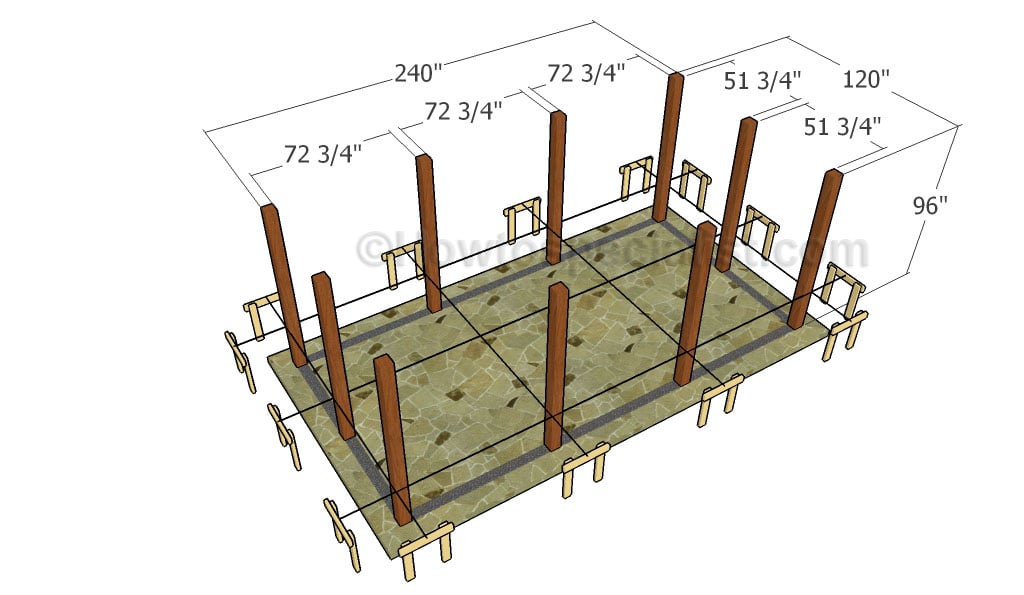
Laying out the pavilion
First of all, we recommend you to lay out the pavilion on a professional manner. Use batter boards and string to lay out the posts as a professional. Measure the diagonals and make adjustments until they are perfectly equal. In addition, apply the 3-4-5 rule to the corners to make sure they are perfectly equal.
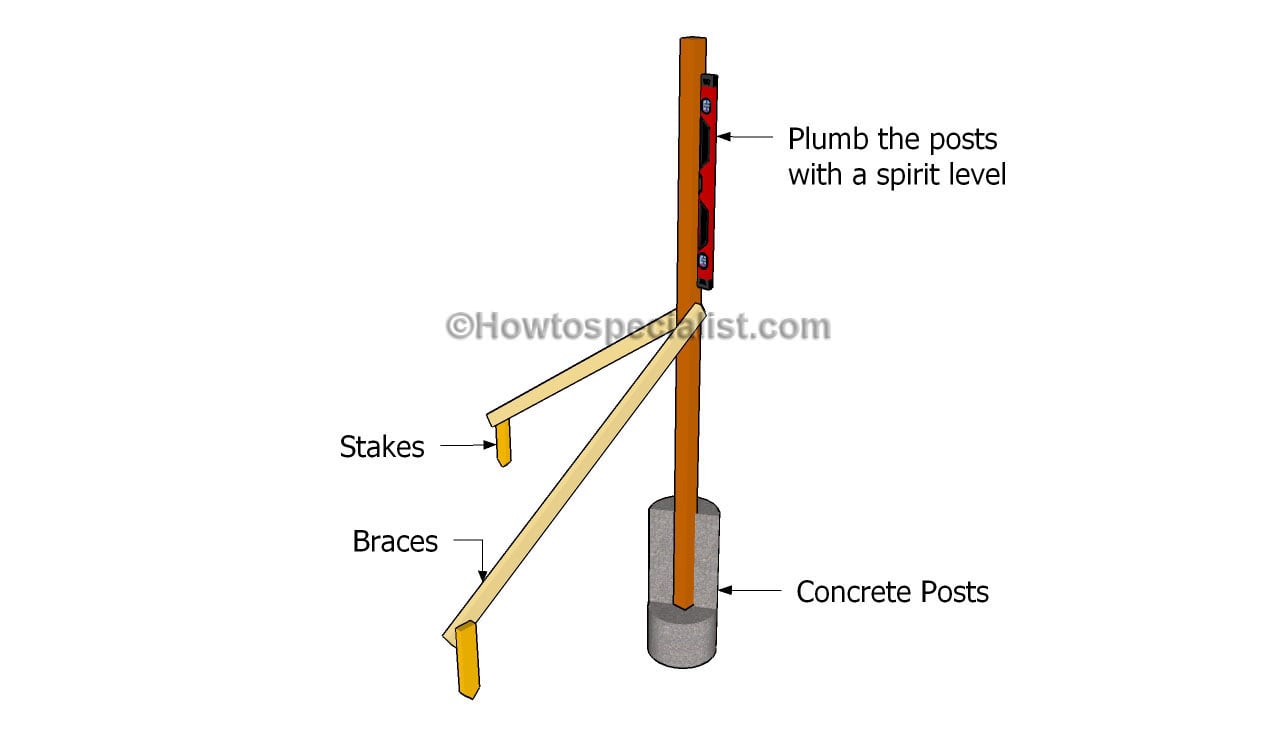
Fitting the posts
The next step of the project is to fit the posts into place. First of all, you need to dig 2-3′ deep holes (at least 6″ under the frost line) and pour a 2″ layer of gravel. Install tube forms and fit the posts into place, making sure they are perfectly plumb. Secure the 6×6 posts with braces before filling the forms with concrete.

Building the top plates
Afterwards, you need to build the top plates for the pavilion. Cut the 6×6 beams at the right size and make the notches to both ends, as described in the diagram. Smooth the cut edges with fine-grit sandpaper, otherwise the components won’t lock together properly.
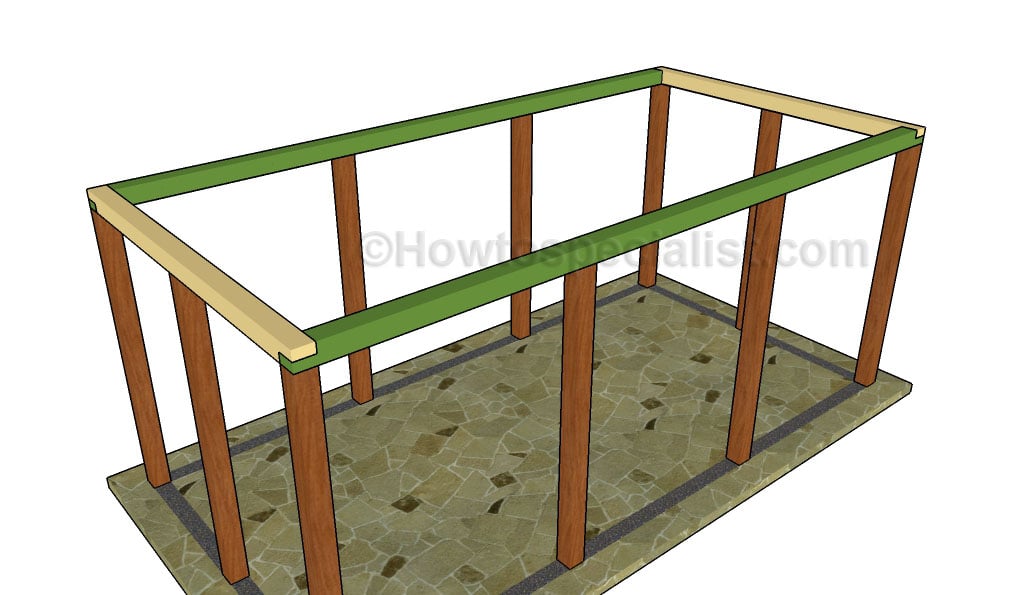
Fitting the top plates
Fit the top beams to the sides of the structure, as described in the diagram. Make sure the edges are flush and check if the corners are right-angled. In addition, plumb the posts with a spirit level to check if they are perfectly plumb. Drill pilot holes and insert screws into the posts. Afterwards, fit the top plates to the ends of the structure, in order to create a rigid structure for the pavilion.
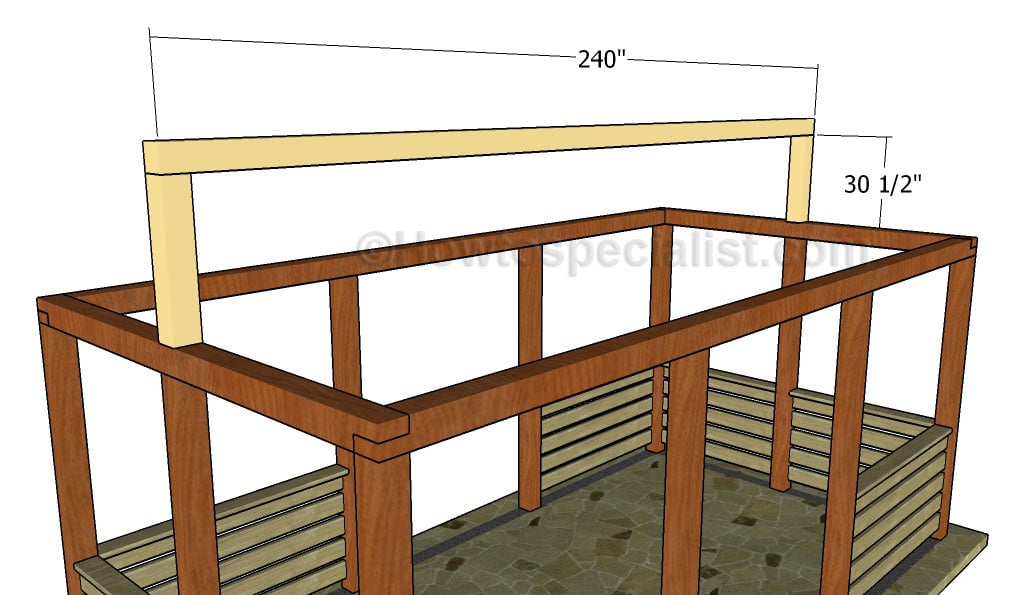
Fitting the top ridge
Continue the project by assembling the frame for the top ridge. Fit the 6×6 supports to the middle of the top plates and secure them into place using galvanized screws. In addition, use metal hardware to enhance the rigidity of the joints and check if all the edges are flush.
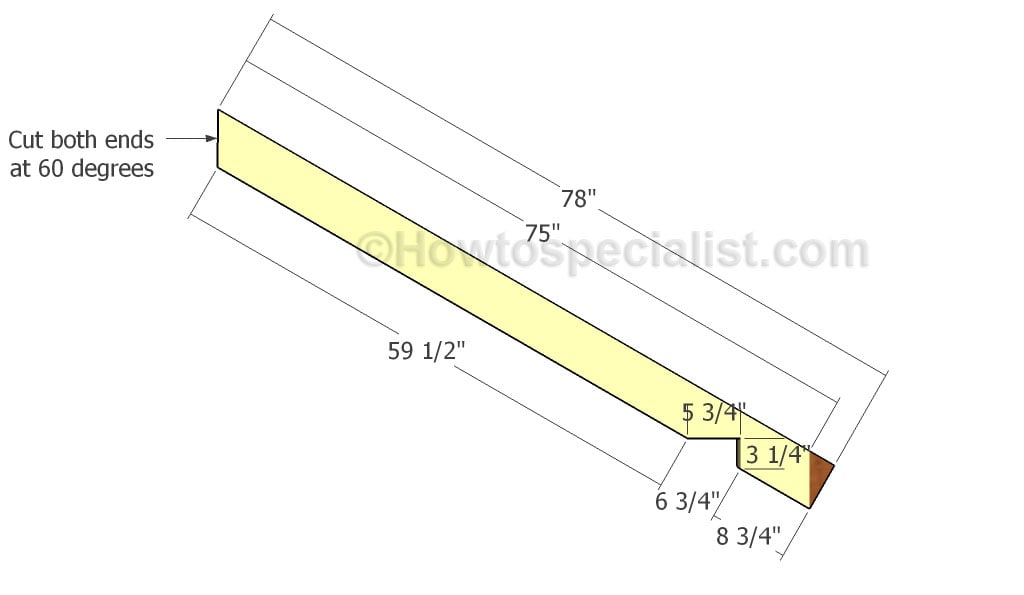
Building the rafters
Build the rafters for the outdoor pavilion out of 2×6 lumber. Mark the cut lines on the rafters and use a good saw to make the cuts. In addition, cut a notch to the bottom of the rafters, otherwise they won’t fit properly into place. Smooth the edges with sandpaper and remove the excess with a damp cloth.
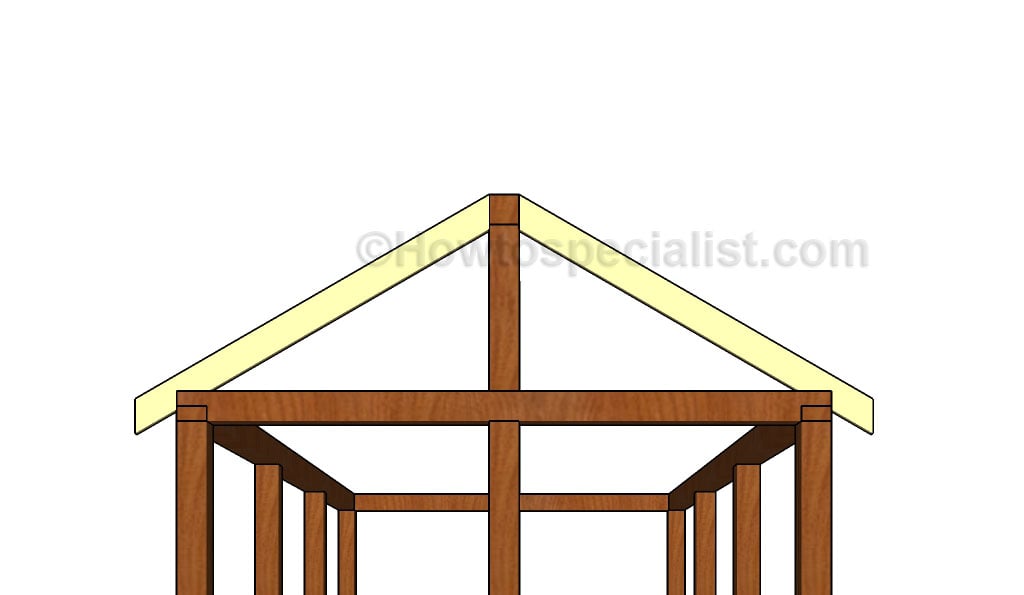
Installing the rafters
Start installing the rafters to the structure, as described in the diagram. Drill pilot holes through the rafters and secure them to the frame using 4 1/2″ screws. Align the components at both ends before inserting the screws.
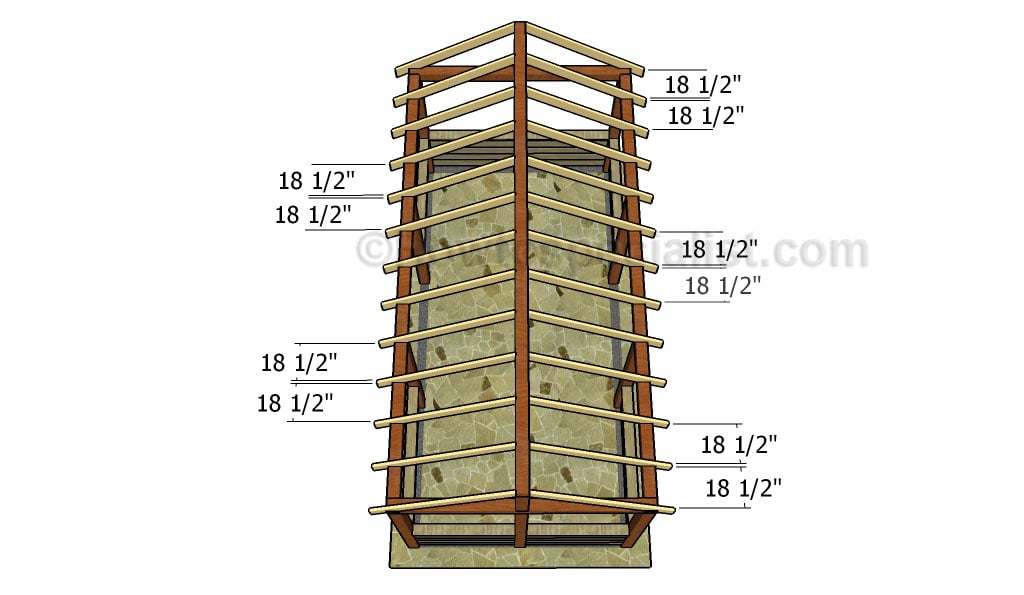
Fitting the rafters
It is essential to place the rafters equally-spaced in order to support the weight properly. Work with attention and leave no gaps between the components for a professional result.
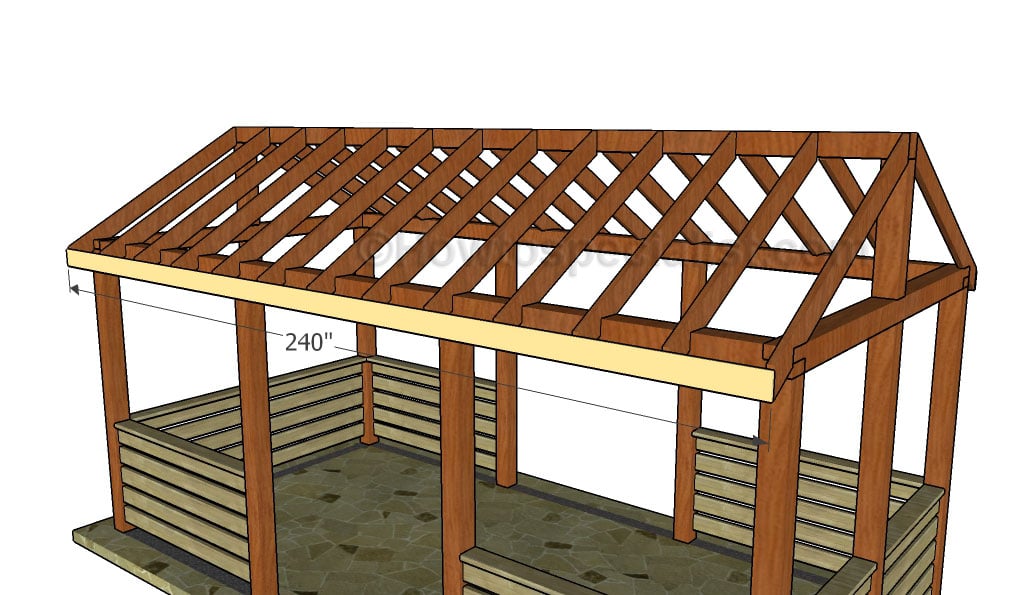
Fitting the rafter trims
In order to enhance the look of the pavilion, we recommend you to attach 1×6 trims to the ends of the rafters. Align everything with attention and secure the components into place tightly, making sure there are no gaps.
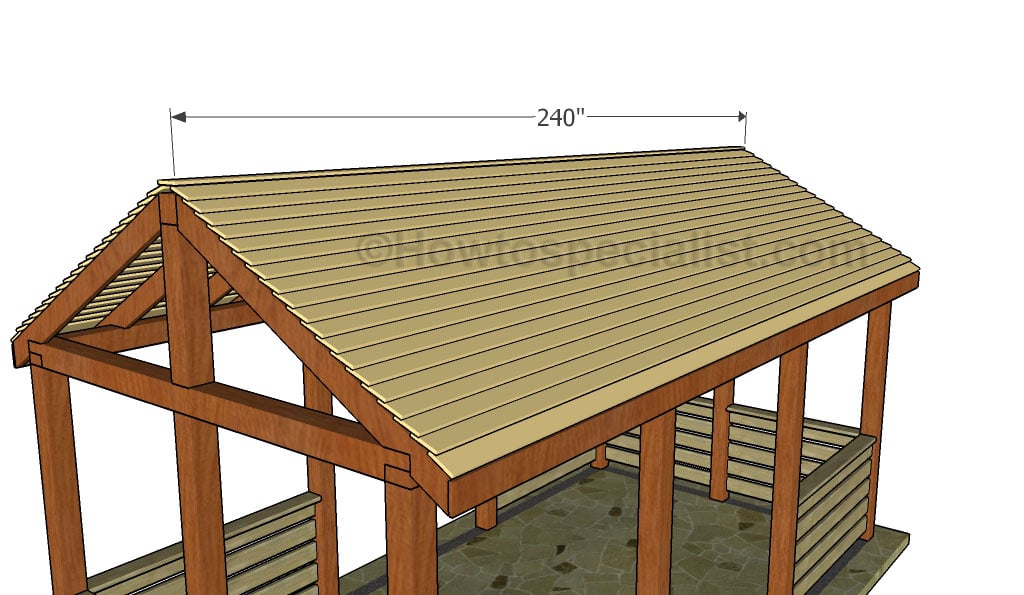
Attaching the roofing
There are several alternatives to choose from when building the roofing for the pavilion. Therefore, you could use 1×6 slats or lay plywood and metal sheets or asphalt shingles. If you are going to install 1×6 slats to the roof structure, you need to start from the bottom. Align everything with great care and secure the components into place using galvanized screws or nails. Fit the rest of the slats making sure they overlap at least 1 1/2″. Make sure the top cap will protect the structure from water damage.
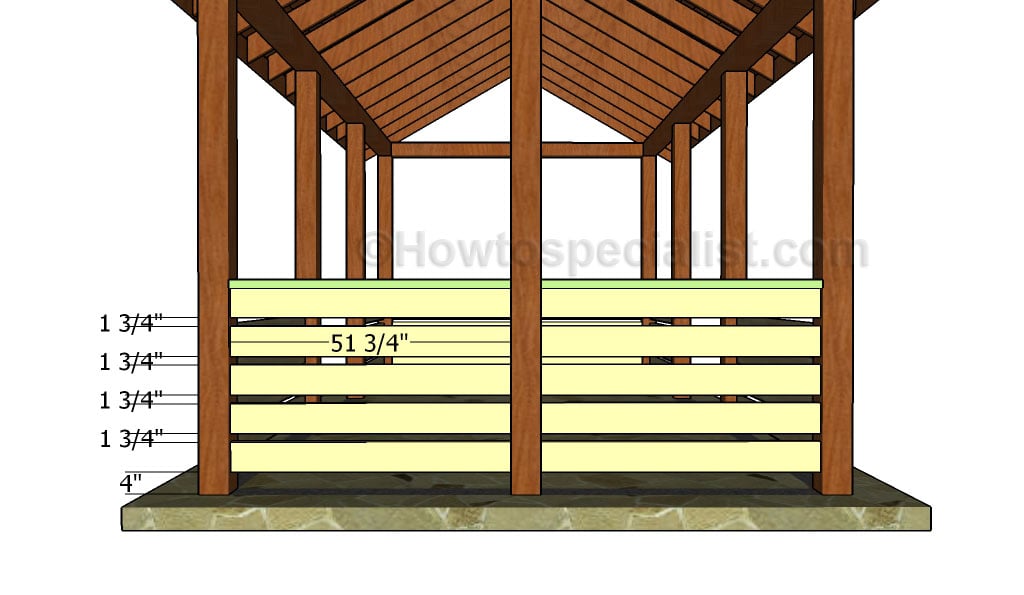
Fitting the railing to ends
There are several ways in which you can build the side railings for the outdoor pavilion. One of the easiest way is to fit 1×6 slats between the posts. Drill pocket holes at both ends of the slats and secure them to the posts using 1 1/4″ screws and glue. Place the slats equally-spaced and leave no gaps between the components. Afterwards, fit the handrail horizontally, in the same manner described above. Leave no gaps between the components and add glue for a better bond.
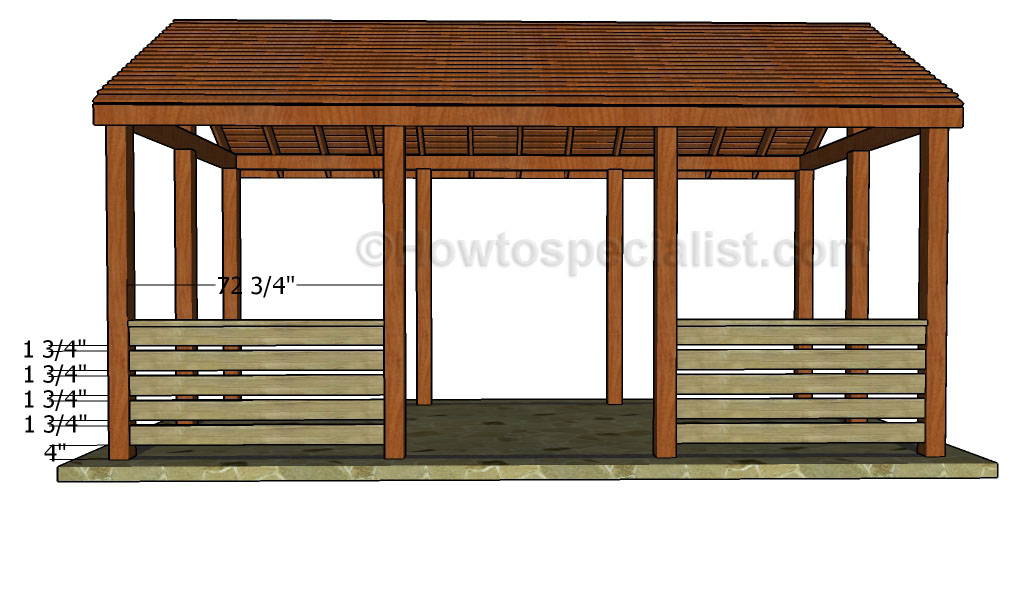
Fitting the railing
Install railings to the sides of the pavilion in order to get the job done. Take accurate measurements and adjust the look of the railings to suit your needs and tastes.
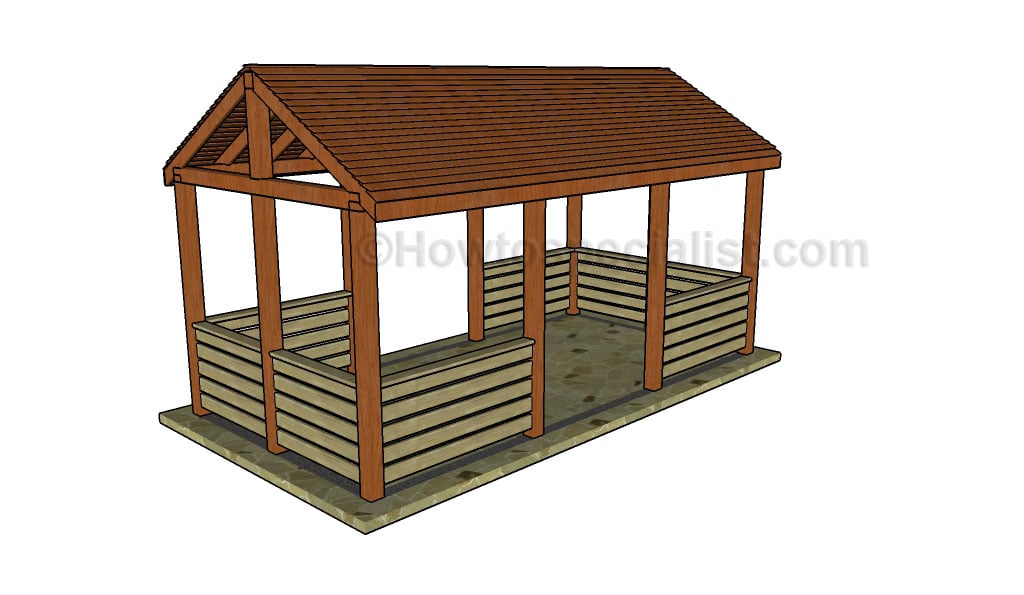
Outdoor pavilion plans
Last but not least, we recommend you to take care of the finishing touches. In order to get a professional result, fill the holes and the gaps with wood filler and let it dry out for a few hours. Check if there are protruding screws and fix this issue, if necessary.
Thank you for reading our project about outdoor pavilion plans and we recommend you to check out the rest of the projects. Don’t forget to LIKE and SHARE our projects with your friends, by using the social media widgets. SUBSCRIBE if you want to be the first that gets our latest projects.
